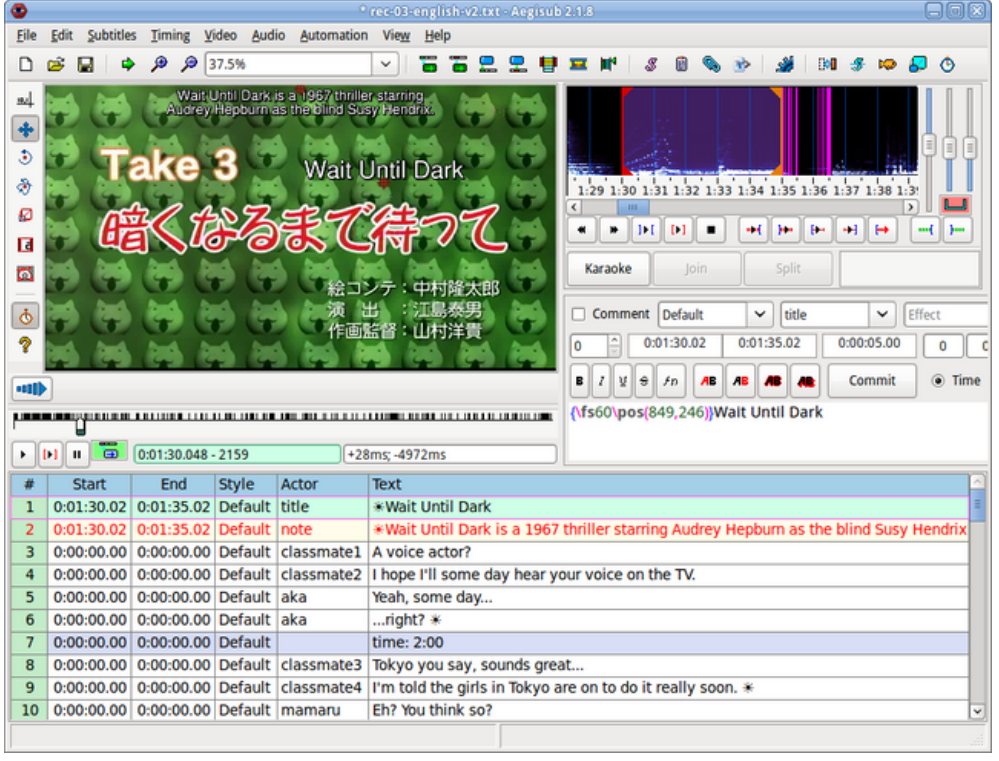Exploring the World of Fansubbing: A Look into the Passionate Work of Non-Professional Subtitle Translators
Exploring the World of Fansubbing: A Look into the Passionate Work of Non-Professional Subtitle Translators
What is fansubbing? Let’s consider it for a moment. We see that the words ‘fan’ and ‘sub’ (short for subtitle) are together. So, we might immediately think that it is something related to fans working on subtitles, right? We are almost correct. The word ‘fansub’ originated back in the 1980s due to the outstanding growth of interest in Japanese anime. Some fans were unsatisfied with the dubbing of their favorite anime, so they started creating unofficial subtitles. Basically, if there is a fan who wants to watch/read something in their mother tongue or to serve the translated work to the target audience without any profits, then we are probably talking about fansubbing. There is a whole world of fansubbers out there, and as consumers, the audience only sees their nicknames, or nothing at all, without knowing how hard they work to reach out to other fans.

Some of you might ask yourselves ‘Why would I do this kind of part-time job for free just because I am a fan of something?’. As a former fansubber, I can say that there is more than one answer to this, of course. However, for most fansubbers, it is something they enjoy doing. Especially for fansubbers, whose main focus is translating and serving an assigned work by their taskmaster, there is a sense of responsibility to transfer the work to the target audience who are also fans but cannot understand the original language.
We utilized a tool called ‘Aegisub’ which proved to be user-friendly and straightforward. Aegisub is a popular open-source software used for creating and editing subtitles. It is specifically designed for fansubbing and provides a range of features to facilitate the subtitling process.

My role in the team is translating recorded live videos and vlogs featuring a music group’s members. Personally, I thoroughly enjoyed the process due to my curiosity about the content and my genuine enthusiasm for their music. However, we did encounter some challenges along the way, particularly with translating interjections (expressions like ‘aww’, ‘oh’, ‘oops’) that were frequently used.

To ensure coherence with the context, we were sometimes allowed to include translator notes above the screen as well.

You might also wonder ‘If there is no one else other than these fansubbers and why do we need them?’, in other words, ‘Why do they feel like they have to do fansubbing if there will be other people for the translation process?’. It might have been a little bit different in the past, but in my opinion, the reason why we have so many fansubbers around us, even though we may never see one in real life, is due to time constraints. Today we live in a consumer society, and it means that an untranslated work would take more time to be translated officially by a single translator. There are some unknown facts
about these fansubbers, and one of them is about this issue. Fansubbers have the advantage of not keeping consumers waiting, as they work as a group. If you become a fansubber, the first thing you will learn is that you are not working alone. The submitted work is divided into parts for each translator, and then you work only on your part. This makes the process of translating easier and quicker.

There are also proofreaders who have more experience than translators and who have different roles such as subtitle creators, editors, and group managers. There are listed rules and an entrance examination as well. Not everyone who has enough knowledge about the required two languages can
be a fansubber. I guess the only essential rule must be willingness and being a fan because you will not get paid for this job. Just enjoy it!






